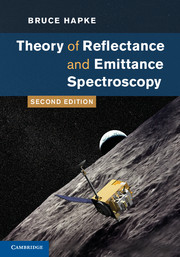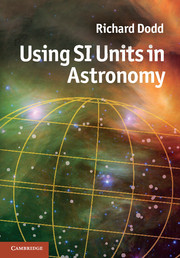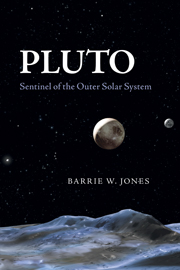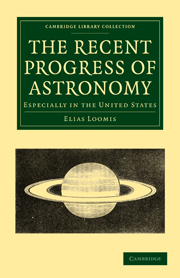Refine listing
Actions for selected content:
16950 results
7 - Propagation in a nonuniform medium: the equation of radiative transfer
-
- Book:
- Theory of Reflectance and Emittance Spectroscopy
- Published online:
- 05 January 2012
- Print publication:
- 19 January 2012, pp 145-179
-
- Chapter
- Export citation
9 - The opposition effect
-
- Book:
- Theory of Reflectance and Emittance Spectroscopy
- Published online:
- 05 January 2012
- Print publication:
- 19 January 2012, pp 221-262
-
- Chapter
- Export citation
Contents
-
- Book:
- Theory of Reflectance and Emittance Spectroscopy
- Published online:
- 05 January 2012
- Print publication:
- 19 January 2012, pp vii-x
-
- Chapter
- Export citation
3 - The absorption of light
-
- Book:
- Theory of Reflectance and Emittance Spectroscopy
- Published online:
- 05 January 2012
- Print publication:
- 19 January 2012, pp 27-44
-
- Chapter
- Export citation
8 - The bidirectional reflectance of a semi-infinite medium
-
- Book:
- Theory of Reflectance and Emittance Spectroscopy
- Published online:
- 05 January 2012
- Print publication:
- 19 January 2012, pp 180-220
-
- Chapter
- Export citation
Bibliography
-
- Book:
- Theory of Reflectance and Emittance Spectroscopy
- Published online:
- 05 January 2012
- Print publication:
- 19 January 2012, pp 488-508
-
- Chapter
- Export citation
12 - Photometric effects of large-scale roughness
-
- Book:
- Theory of Reflectance and Emittance Spectroscopy
- Published online:
- 05 January 2012
- Print publication:
- 19 January 2012, pp 303-338
-
- Chapter
- Export citation
Acknowledgments
-
- Book:
- Theory of Reflectance and Emittance Spectroscopy
- Published online:
- 05 January 2012
- Print publication:
- 19 January 2012, pp xi-xiv
-
- Chapter
- Export citation
1 - Introduction
-
- Book:
- Theory of Reflectance and Emittance Spectroscopy
- Published online:
- 05 January 2012
- Print publication:
- 19 January 2012, pp 1-4
-
- Chapter
- Export citation
Appendix E - Table of symbols
-
- Book:
- Theory of Reflectance and Emittance Spectroscopy
- Published online:
- 05 January 2012
- Print publication:
- 19 January 2012, pp 482-487
-
- Chapter
- Export citation
Appendix C - The wave equation in spherical coordinates
-
- Book:
- Theory of Reflectance and Emittance Spectroscopy
- Published online:
- 05 January 2012
- Print publication:
- 19 January 2012, pp 470-477
-
- Chapter
- Export citation
Index
-
- Book:
- Theory of Reflectance and Emittance Spectroscopy
- Published online:
- 05 January 2012
- Print publication:
- 19 January 2012, pp 509-513
-
- Chapter
- Export citation
4 - Specular reflection
-
- Book:
- Theory of Reflectance and Emittance Spectroscopy
- Published online:
- 05 January 2012
- Print publication:
- 19 January 2012, pp 45-65
-
- Chapter
- Export citation
Appendix D - Fraunhofer diffraction by a circular hole
-
- Book:
- Theory of Reflectance and Emittance Spectroscopy
- Published online:
- 05 January 2012
- Print publication:
- 19 January 2012, pp 478-481
-
- Chapter
- Export citation
5 - Single-particle scattering: perfect spheres
-
- Book:
- Theory of Reflectance and Emittance Spectroscopy
- Published online:
- 05 January 2012
- Print publication:
- 19 January 2012, pp 66-99
-
- Chapter
- Export citation
Appendix A - A brief review of vector calculus
-
- Book:
- Theory of Reflectance and Emittance Spectroscopy
- Published online:
- 05 January 2012
- Print publication:
- 19 January 2012, pp 463-466
-
- Chapter
- Export citation

Theory of Reflectance and Emittance Spectroscopy
-
- Published online:
- 05 January 2012
- Print publication:
- 19 January 2012

Using SI Units in Astronomy
-
- Published online:
- 05 December 2011
- Print publication:
- 01 December 2011

Pluto
- Sentinel of the Outer Solar System
-
- Published online:
- 05 December 2011
- Print publication:
- 12 August 2010

The Recent Progress of Astronomy
- Especially in the United States
-
- Published online:
- 05 December 2011
- Print publication:
- 10 June 2010
- First published in:
- 1856
